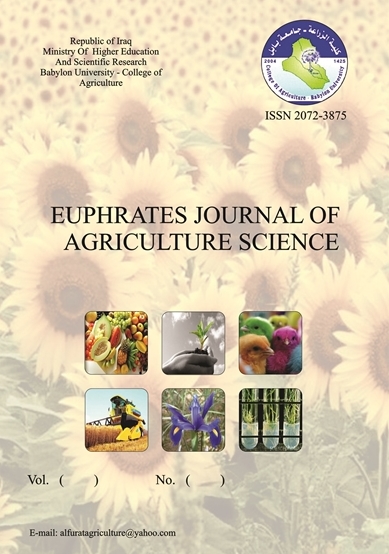Abstract
upper and middle reaches, the rivers have high sand contents. The main aim of this research is to define the mineralogical composition of recent sediments deposited by the Tigris, Euphrates, and Shatt al-Arab rivers and to determine the provenance of these sediments. Three sites were chosen: two in the Al-Qurna region representing the deposits of the Tigris and Euphrates rivers before their confluence, and a third in the Al-Faw region representing the Shatt Al-Arab River sediments. The soil was separated into depths of 0-30 cm, 30-60 cm, and 60-90 cm at each location. The separated sand (53-5000 micrometers) was then analyzed using X-ray diffraction. The mineral compositions and their percentages were determined using a point-counting device. The results of the X-ray diffraction examinations of the Tigris River sediments showed the presence of quartz (39.9%, 38.2%, and 34.6%), calcite (31.3%, 31.2%, and 35.5%), albite (8.8%, 9.7%, and 4.8%), dolomite (4.8%, 5.6%, and 5.4%), hematite (2.0%, 1.7%, and 1.8%), and magnetite (2.9%, 3.4%, and 3.1%) across the respective depths. In the Euphrates River sediments, the mineral contents were quartz (38.4%, 38.5%, and 39.9%), calcite (36.1%, 28.4%, and 37.9%), albite (6.1%, 3.8%, and 6.0%), dolomite (4.6%, 5.4%, and 5.1%), hematite (1.3%, 1.9%, and 1.6%), magnetite (2.7%, 2.5%, and 3.1%), mica (4.2%, 7.6%, and 0.3%), and chlorite (2.5%, 2.5%). In the Shatt al-Arab sediments, the minerals identified were quartz (41.5%, 40.3%, and 57.8%), calcite (27.0%, 37.1%, and 26.9%), albite (4.7%, 3.2%, and 13.9%), dolomite (6.2%, 4.5%, and 5.1%), hematite (2.4%, 1.9%, and 1.6%), magnetite (3.6%, 3.1%, and 3.1%), mica (1.0%, 4.2%, and 0.3%), and chlorite (6.0%, 0.9%) at the respective depths. The compositions change across each section of the upper and middle reaches due to local sediment supply from arid desert areas and seasonal tributaries
